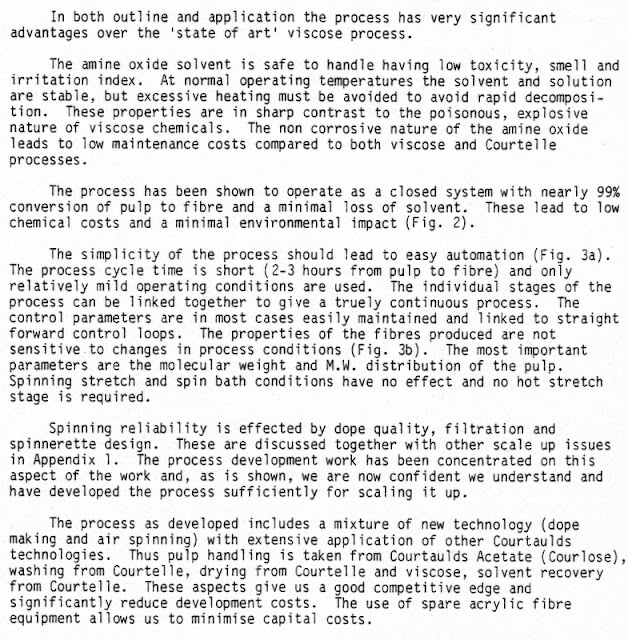This post is out of sequence but compared with the last one it serves to indicate how much progress was made in less than 10 years.
The copy below is from the document used to justify the first major scale-up of the Genesis process from Research to the Grimsby factory. It's interesting to note how "the use of spare acrylic fibre equipment...to minimise capital costs" over 25 years ago effectively finalised the broad aspects of Tencel process design in Courtaulds.
This use of Courtelle washing and drying technology, an old tow route developed from a viscose tow line to make fibre for stretch-breaking, defined the presentation and processability of the future Tencel .
Mechanical crimp as used on thermoplastic fibres was needed prior to dry cutting to make a processable staple fibre from the tow. This had never been used commercially on a 100% cellulose tow and the early fibre suffered from low cohesion and crimper damage which made it difficult to process at high speed, especially on nonwoven lines.
Early Tencel was in fact best in the tow market and made an excellent short-cut fibre which easily outperformed viscose in wet- and air-laid nonwovens and paper.
(This extract is from a document entitled "Project Genesis" 1/9/86, but no authors are mentioned)

No comments:
Post a Comment